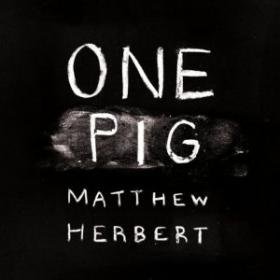Matthew Herbert’s adventures in found sound continue with One Pig, an album that documents the life cycle of a single pig — from birth to slaughter to consumption — using field recordings captured at two-week intervals between August 2009 and August 2010. Although it is the final installment in Herbert’s “One” trilogy — preceded by One One and One Club — this record also aligns with other parts of the Herbert catalogue. One Pig recalls both the aesthetics of Around the House, where Herbert cooked up songs with the accidental sounds of domestic life, and the politics of Plat Du Jour, an album that incorporated sounds from the food chain. Here, Herbert goes past the clatter of knife and fork to explore the origins of the food that ends up between them.
With its shifting vocabulary of styles, One Pig calls into question not only how bacon arrives on our plates, but also how songs arrive in our playlists. In a sense, this is a concept album about animal production and consumption that seems to question the ways in which album themselves are produced and destined for consumption. Indeed, Herbert has written that “the frontline of music feels more vigorous, visceral and powerful, knee-deep in shit than rearranging genres in some kind of air-conditioned sarcophagus of ideas we call the modern recording studio.”
Like all Herbert albums, this one has curious ideas that reinforce its theme — some tracks use a wind instrument made with pig’s blood and another features pig-skin drums — but unlike some of his other work, One Pig largely fails to move the body or the mind. Some tracks flirt with total dissolution into noise (“November,” “February,”); others hold shape as shimmery synth tunes (“October”). None of them seem to have a clear direction beyond bending the pig recordings closer to the shape of song forms. In short, it seems like the music is supposed to be secondary to the politics. The politics, though, are clouded rather than carried by the music.
One Pig is most affecting when it offers recognizable sounds: pigs grunting, knives hitting metal, the smacking and slurping of people eating a meal. Unfortunately, for most of the album, these sounds are couched in an errant pastiche that fails to persuade or please. Instead of escaping “the air-conditioned sarcophagus,” Herbert allows his production habits to cabin his subject and subvert his message. By the end, I’m left wondering why he went to the trouble of mucking up the pig sounds. An hour of field recordings would have done the job far better.
